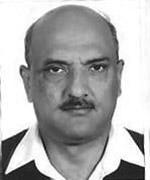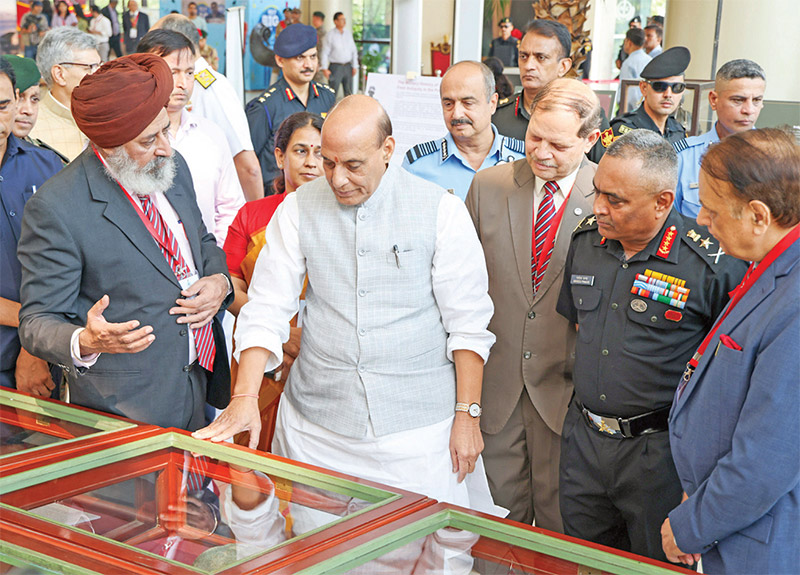New Government, Old Issues
 S.K. Sood
S.K. Sood
The five Central Armed Forces—Border Security Force (BSF), Central Reserve Police Force (CRPF), Indo-Tibetan Border Police (ITBP), Central Industrial Security Force (CISF), Sashashtra Seema Bal (SSB) under the ministry of home affairs (MHA), and Assam Rifles (AR) the sixth central armed force which operates under the ministry of defence, have a very important role in the security structure of the country.
These forces must keep pace with the changing operational environment, methodology adopted by adversaries, as well as changing societal norms. Therefore, these forces need to adapt not only to modern technology but also ensure that the man behind the machine is adequately motivated and trained to perform their duties effectively and efficiently. This piece attempts to suggest some measures for the enhancement of the efficiency of these forces, to the new government that will take charge after 4 June 2024.
The reforms in these forces cannot happen without reforms in the ministry of home affairs, which as the ministry controlling these forces, takes all major decisions regarding every aspect of these forces. The officials manning the ministry must have an insight into the needs of these forces, be it border management, internal security or human resource (HR)management. In order to achieve this, the ministry must induct officers who have worked at a functional level in these forces and are well versed with their operational and other constraints.
One important function of the home ministry concerning these forces is in the acquisition of technology for modernising these forces. It must ensure that the technology inducted conforms to the requirements of the field and is not vendor driven. To be fair, the recommendations for the induction of such technology are made by the force itself. However, the policy level leadership of these forces—the IPS officers who make such recommendations, do not have any experience of operating at the ground level in and hence are not well positioned to assess the requirement as they lack insights about the challenges that troops face in the field. Moreover, these leaders being on temporary lien with these forces, do not bring a long-term vision to the table. It is therefore essential that officers from the cadre of these forces are appointed in the ministry so that the perspective of the silent end user is taken into account in selecting technology.

Rajnath Singh with troops of Red Shield Division and Assam Rifles during his visit to Headquarters Inspector General Assam Rifles (South) at Mantripukhri in Imphal
The technology being considered for induction must also be cost effective as there always are budget constraints. For example, the CIBMS (Comprehensive Integrated Border Management Systems) being experimented with are fairly expensive with an equally heavy annual recurring cost. Most of its components are imported, which makes the repairs and maintenance of the equipment after the guarantee period very difficult. The focus therefore must be on building indigenous capacity which will, besides being cost effective, also be easy to maintain.
The government may even consider the creation of a body similar to the Defence Acquisition Council within the MHA for the acquisition of higher technology and large-scale projects. The recommendations of such a body will be binding on the forces as most big technology projects tend to be discarded by the transient leadership because of a lack of perspective.
The bureaucrats, not aware of the ground realities, tend to think that all situations have similar solutions and can be dealt with uniformly. Take for example, the equipping policy of the border guarding forces. The equipment authorised for a battalion of SSB is the same as that of the BSF. So, a unit of SSB is equipped with infantry weapons including MMGs and 81 millimetre mortars just like that of a BSF unit. Authorising these weapons to a BSF unit, especially on the hostile western border with Pakistan and on the Line of Control (LC) in Jammu and Kashmir is justified to an extent as these weapons may have to be used, especially during a war-like situation. However, this is not the case along Nepal and Bhutan borders which are peaceful, heavily populated and permit free movement of people of both countries across the border. While SSB too has a wartime role, however, the possibility of a war in this area being remote, equipping each of their units with these weapons needs to be rationalised. Authorisation of these weapons to BSF units deployed on the east and in anti-insurgency roles too needs a review.
Quoting my personal experience, when going on a private visit to Bhutan, I had no answer to the question of a Bhutanese immigration officer, when he asked me “Why was SSB so heavily armed while Bhutan didn’t even have a regular border guarding force?” My response that the weapons were needed against trans-border criminals failed to convince him.
The government therefore needs to thoroughly review the equipping policy of these forces. Authorisation of equipment should be in accordance with the operational needs and terrain configuration of the area of deployment. Suffice to say that the new government should work towards making an equipping policy based on the functional requirement of the particular force.
Rationalisation of weapons and equipment will also necessitate a review of the organisational structure. The manpower released by rationalising the equipping policy can be redistributed for operational duties and/or
Subscribe To Force
Fuel Fearless Journalism with Your Yearly Subscription
SUBSCRIBE NOW
We don’t tell you how to do your job…
But we put the environment in which you do your job in perspective, so that when you step out you do so with the complete picture.








